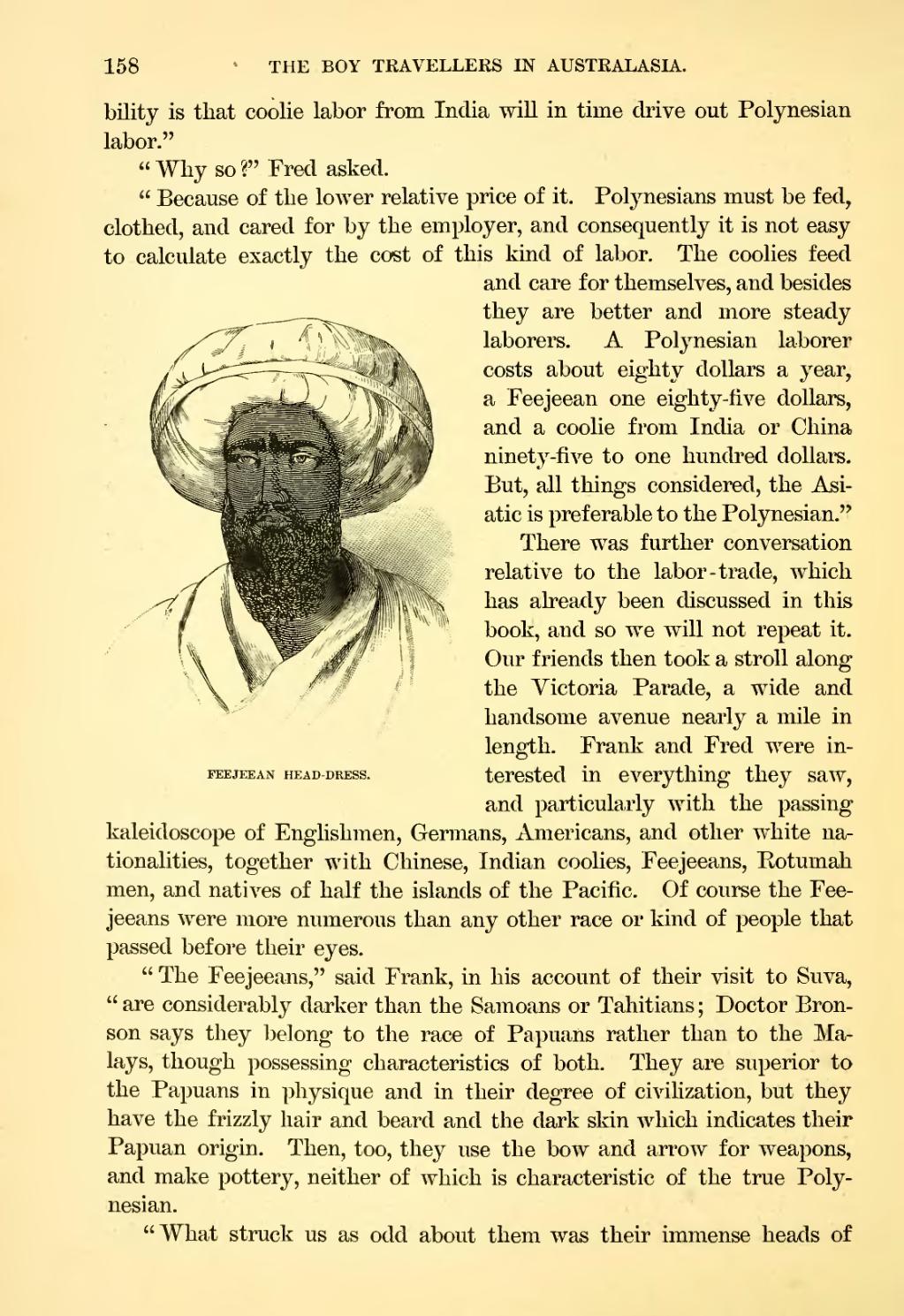bility is that coolie labor from India will in time drive out Polynesian labor."
"Why so?" Fred asked.
"Because of the lower relative price of it. Polynesians must be fed, clothed, and cared for by the employer, and consequently it is not easy to calculate exactly the cost of this kind of labor. The coolies feed 
FEEJEEAN HEAD-DRESSand care for themselves, and besides they are better and more steady laborers. A Polynesian laborer costs about eighty dollars a year, a Feejeean one eighty-five dollars, and a coolie from India or China ninety-five to one hundred dollars. But, all things considered, the Asiatic is preferable to the Polynesian."
There was further conversation relative to the labor-trade, which has already been discussed in this book, and so we will not repeat it. Our friends then took a stroll along the Victoria Parade, a wide and handsome avenue nearly a mile in length. Frank and Fred were interested in everything they saw, and particularly with the passing kaleidoscope of Englishmen, Germans, Americans, and other white nationalities, together with Chinese, Indian coolies, Feejeeans, Rotumah men, and natives of half the islands of the Pacific. Of course the Feejeeans were more numerous than any other race or kind of people that passed before their eyes.
"The Feejeeans," said Frank, in his account of their visit to Suva, "are considerably darker than the Samoans or Tahitians; Doctor Bronson says they belong to the race of Papuans rather than to the Malays, though possessing characteristics of both. They are superior to the Papuans in physique and in their degree of civilization, but they have the frizzly hair and beard and the dark skin which indicates their Papuan origin. Then, too, they use the bow and arrow for weapons, and make pottery, neither of which is characteristic of the true Polynesian.
"What struck us as odd about them was their immense heads of

